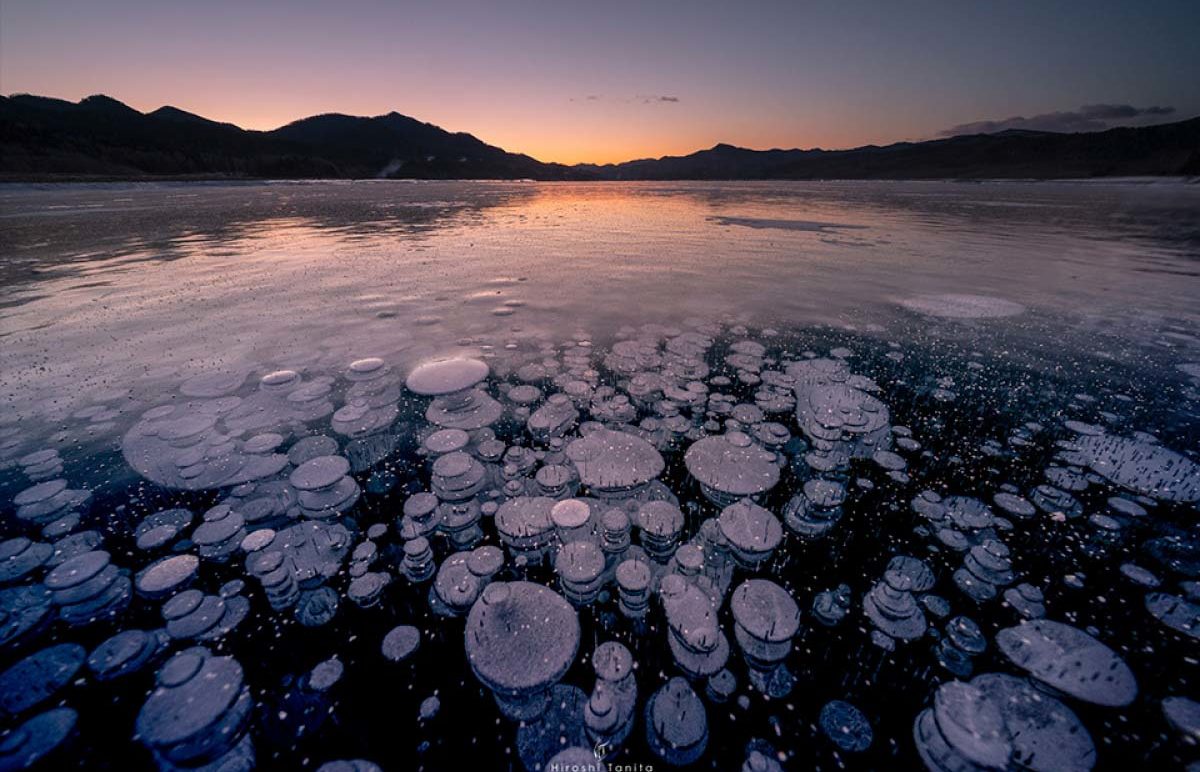
This photograph was taken in February, 2019.
Image courtesy of: Zekkei Japan
Nature produces the most amazing phenomena… making way for the most beautiful of photographs. Recently, Lake Nukabira, located in central Hokkaido, has become “the place” to see one of the world’s most beautiful creations.
Simply explained, gas and other substances at the lake’s bottom freeze as they rise up to the water’s surface. The bubbles produced become trapped in the many layers and create multi-dimensional displays that can only be termed as “ice bubbles.”
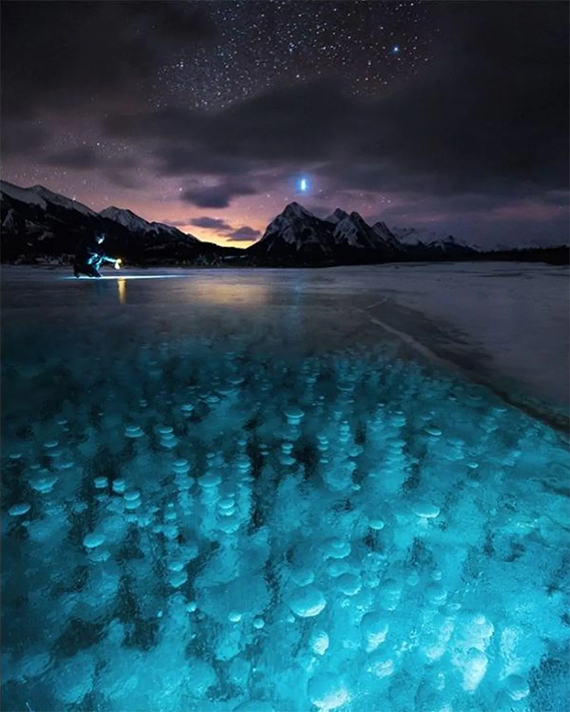
Ice bubbles at night
Image courtesy of: CBC, photographed by Nick Fitzhardinge
This region in Japan is known for getting a lot of snowfall during the winter. Scientists believe that in previous years, snow acted as a blanket for the magic that was underneath the water’s surface. In the past couple of years however, the bubbles have found their way to the surface since snow has been swept away. The lakes and their bubbles have provided onlookers and photographers of every skill level the opportunity to capture an amazing display.
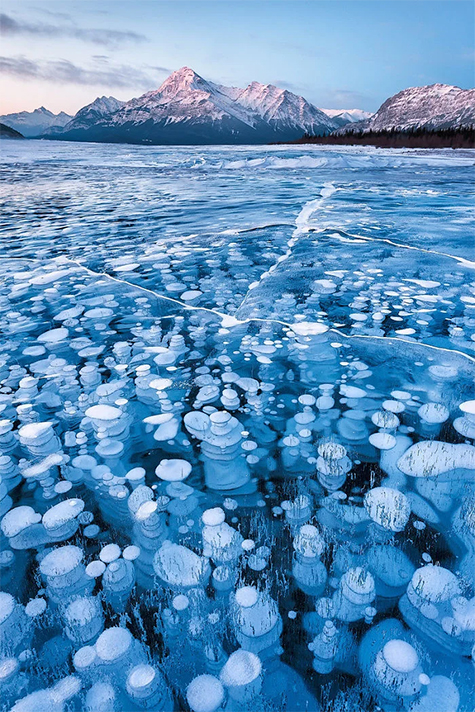
These icy cells look as though they are imprisoned!
Image courtesy of: Reddit, photographed by: Emmanuel Coupe-Kalomiris
Abraham Lake in Canada is another place where this amazing phenomenon can be seen. This man-made body of water in the province of Alberta is internet-famous thanks to what happens below its frozen surface. The process begins when bacteria starts to feed on decaying animals, fish, and plants that have collected on the lake’s bottom. This process causes methane gas in the form of seemingly infinite numbers of bubbles to appear. As these minuscule bubbles float to the surface, they remain trapped… and frozen. They are situated like this until the thaw begins during springtime!
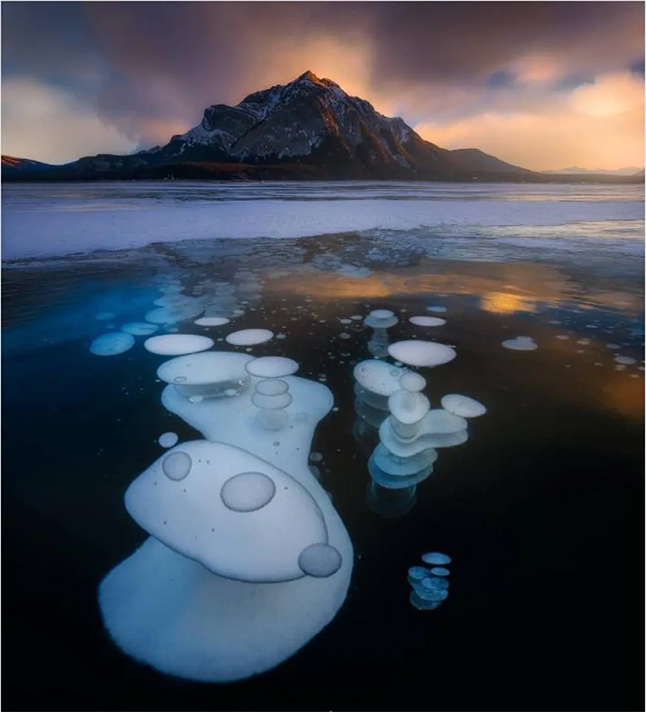
Nature’s lava lamps!
Image courtesy of: CBC, photographed by: Aharon Amram
Certain spots such as Lake Nukabira in Japan and Abraham Lake in Canada are particularly stunning because the area’s winds keep the lakes’ surfaces “clean.” Nevertheless, there are thousands of other lakes that support this amazing occurrence. Katey M. Walter Anthony, a scientist at The University of Alaska, Fairbanks, has seen similar patterns at natural and man-made lakes in both the United States and abroad. Some examples are lakes in Minnesota, Wyoming, South Dakota, Alaska, China, Russia, and Greenland.
Dr. Walter Anthony first experienced this by happenstance when in Siberia. She says (courtesy of an article for The New York Times by Joanna Klein), “I went out on the ice, this black ice, and it looked like the starry night sky. You could see these bubble clusters everywhere. I realized — ‘aha!’ — this is where all the methane is.”
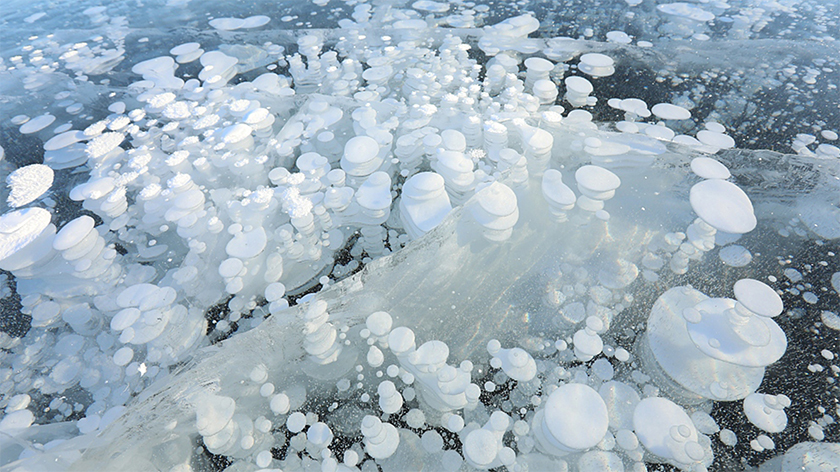
The ice bubbles in Sayram Lake in Northwest China.
Image courtesy of: CGTN
In reality however, the appearance of these bubbles is not a good thing. Methane is a powerful greenhouse gas and global warming has caused formerly frozen areas to thaw more quickly than ever before. An enormous amount of material is trapped in the permafrost and after the thaw, the bacteria breaks it down and releases methane or carbon dioxide. Scientists warn that the release of these gases will intensify and quicken global warming. Obviously this is not a good thing but nevertheless, the ice bubbles are stunning and seeing them in person must be a spectacular sight!